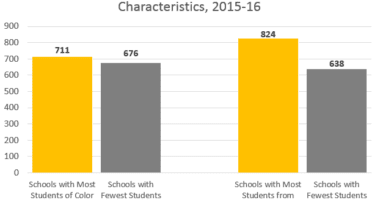Lifting the Veil: Michigan’s Uncounted
All students matters and every student should count. Yet Michigan routinely fails to count nearly 100,000 students and minimizes the importance of tens of thousands of black, brown and poor students.
Last week was Michigan’s “count day” – when students in each school are tallied so that per-pupil funds can be appropriately distributed. But it also plays an important role for including the learning of every student in school accountability.
This is because a school is held accountable only for the students who attend for a full school year. But a student who starts the year at one school and transfers to another school isn’t included in accountability rankings for either school.
The result? Mobile students don’t count. This under-counts about 6.7 percent of all Michigan students.
Michigan 2016-17 Student Count Mobility Report obtained via mischooldata.org
This structure can incentivize schools to encourage low-performing and vulnerable students to leave the school after the first count day. Students of color are especially vulnerable, as they move between schools at a higher rate than white peers. African American students and students from low-income families are twice as likely to be mobile as their higher income and white peers.
Unfortunately, this is not the only way that Michigan under-counts historically-underserved groups of students.
In order for a school to report on the learning of a group of students, at least 30 students who are members of that group must attend the school. When fewer than 30 students of any given group attend a school, gaps in opportunity and achievement are hidden from view. These students are hidden from sight and hidden from the mind, as inequities continue to grow.
Today in Michigan, almost 200,000 students have a diagnosed disability. But because most schools have relatively small populations of special education students, almost 25,000 Michigan grade 3-8 students with disabilities are hidden from school accountability. This is because nearly two-thirds of all schools have too few students with disabilities taking the M-STEP to be reported as a group in school accountability. The result is that in a state considered to be at the national bottom for serving students with disabilities, Michigan is not even tracking how well or poorly special education students in the vast majority of schools.
This is unacceptable.
What gets measured gets done, and Michigan is failing in the most basic of ways. Nearly 100,000 students are left off the ledger because they moved from one school to another. Wide gaps in opportunity and achievements are hidden for thousands more because too few students in the school have the same racial background, disability status or family income. All the while, Michigan’s long-standing inequities grow even larger.
Michigan cannot fully address the significant educational inequities found within schools and districts, and across the state until every student truly counts. This count day should be about much more than school funding. It should be about uncovering our hidden students and insisting that all students are well served and prepared to succeed.





